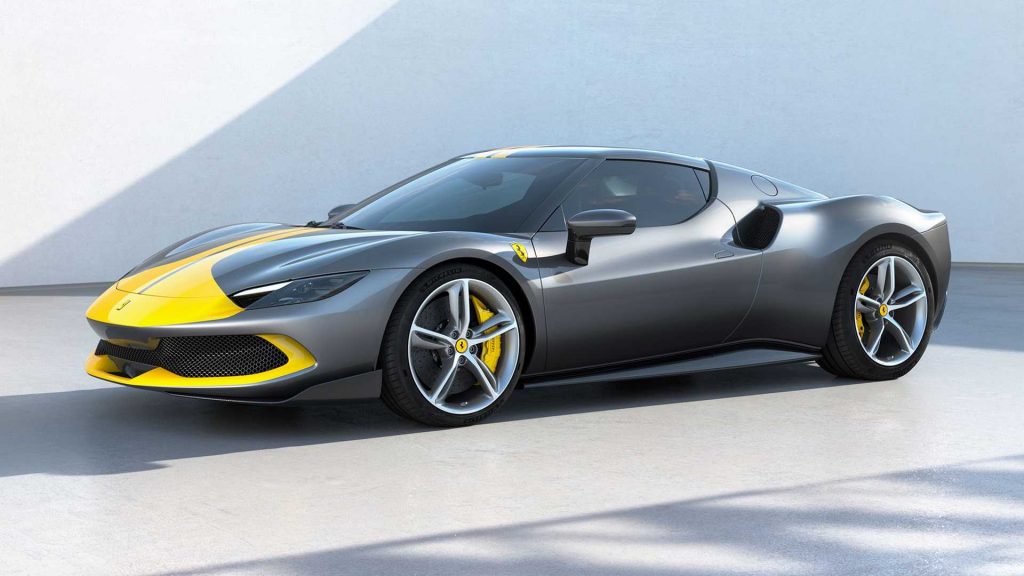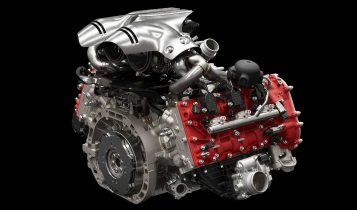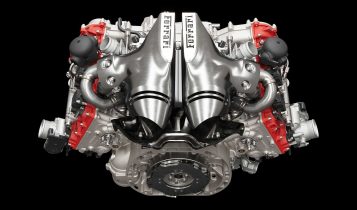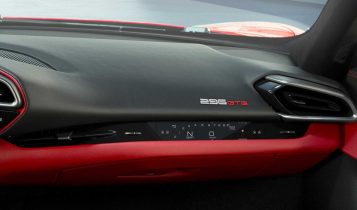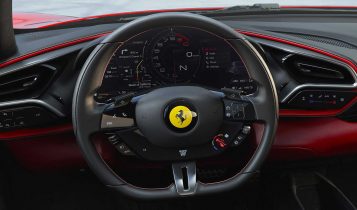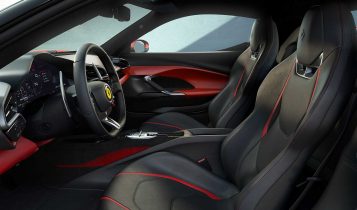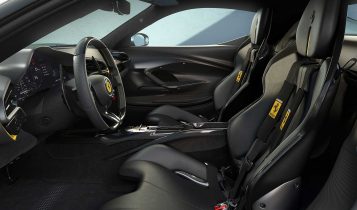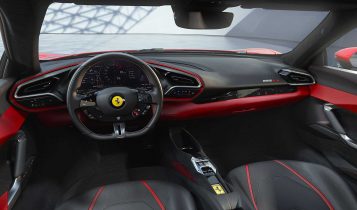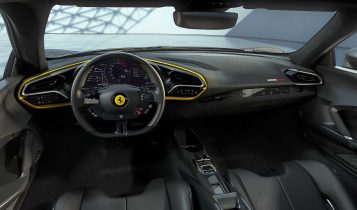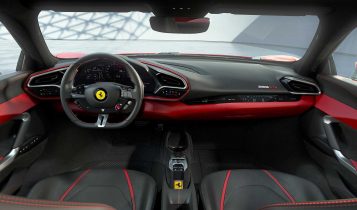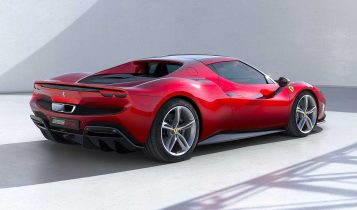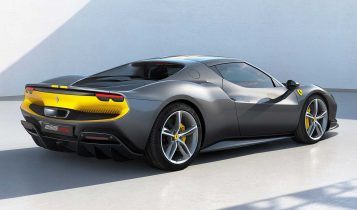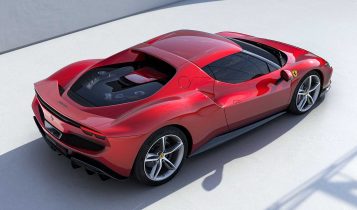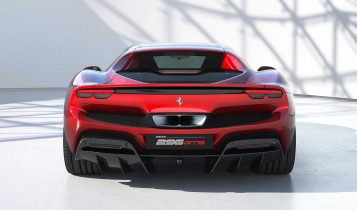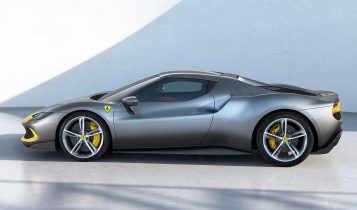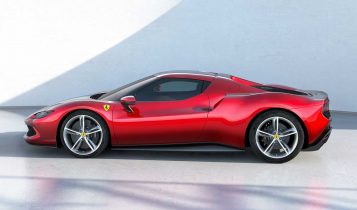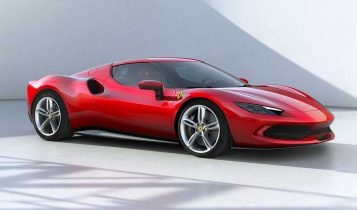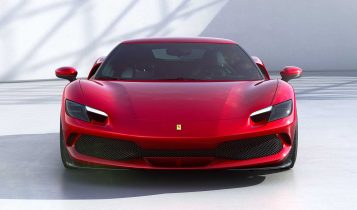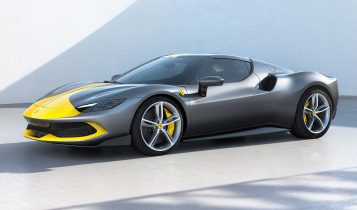The six-cylinder Ferrari has returned but it is not the new Dino. Instead, the new sports car from Maranello gets its name from the engine’s displacement (2.9 litres) and the number of cylinders (six), plus the GTB suffix representing Gran Turismo Berlinetta.
One would think the Ferrari 296 GTB is a downgrade considering it packs two fewer cylinders than the F8 Tributo but you would be mistaken once you get on to the output of the plug-in hybrid system.
The 2.992cc V6 is an all-new development and is their first engine to have the turbochargers installed inside the vee to provide better packaging while shaving off weight and lowering the centre of gravity. The package delivers a potent 218 hp per litre which Ferrari claims is a new specific power output record for a road-going production car.
The internal combustion engine can deliver 654 hp (488 kW) and with the help of an electric motor, the 296 GTB can deliver a whopping 818 hp (610 kW) and 740 Nm (546 lb-ft) of torque. Thanks to this, the new prancing horse will rocket off the line to 100 km/h (62 mph) in just 2.9 seconds (matching the F8) and hit 200 km/h in 7.3 seconds (0.5s quicker than F8). Hold your foot down and you will do more than 205 mph (330 km/h).
The power is sent through an 8-speed dual-clutch transmission the same one from the SF90. The 296 GTB is fitted with a 7.45-kWh battery mounted under the floor, providing enough juice for a limited electric range of 25 km (16 miles).
If you opt for the optional Assetto Fiorano package, the dry weight is 1,470 kg thanks to the use of more carbon fibre inside and out along with a Lexan rear window. You will also get Michelin Sport Cup 2 R tyres and a special livery serving as a nod to the 250 Le Mans.
Ferrari claims the new 296 GTB is 1.5 seconds quicker than the F8 as it lapped Fiorano in 1:21.
Ferrari claims the exterior styling illustrates the “perfect marriage of simplicity and functionality” much like the 1963 race car. The active rear spoiler at the back takes after the LaFerrari’s while the windscreen wraps around onto the side windows akin to the J50 and other limited-run models. The digital-heavy interior is derived from the SF90 Stradale with capacitive controls and a standard passenger-side display.

